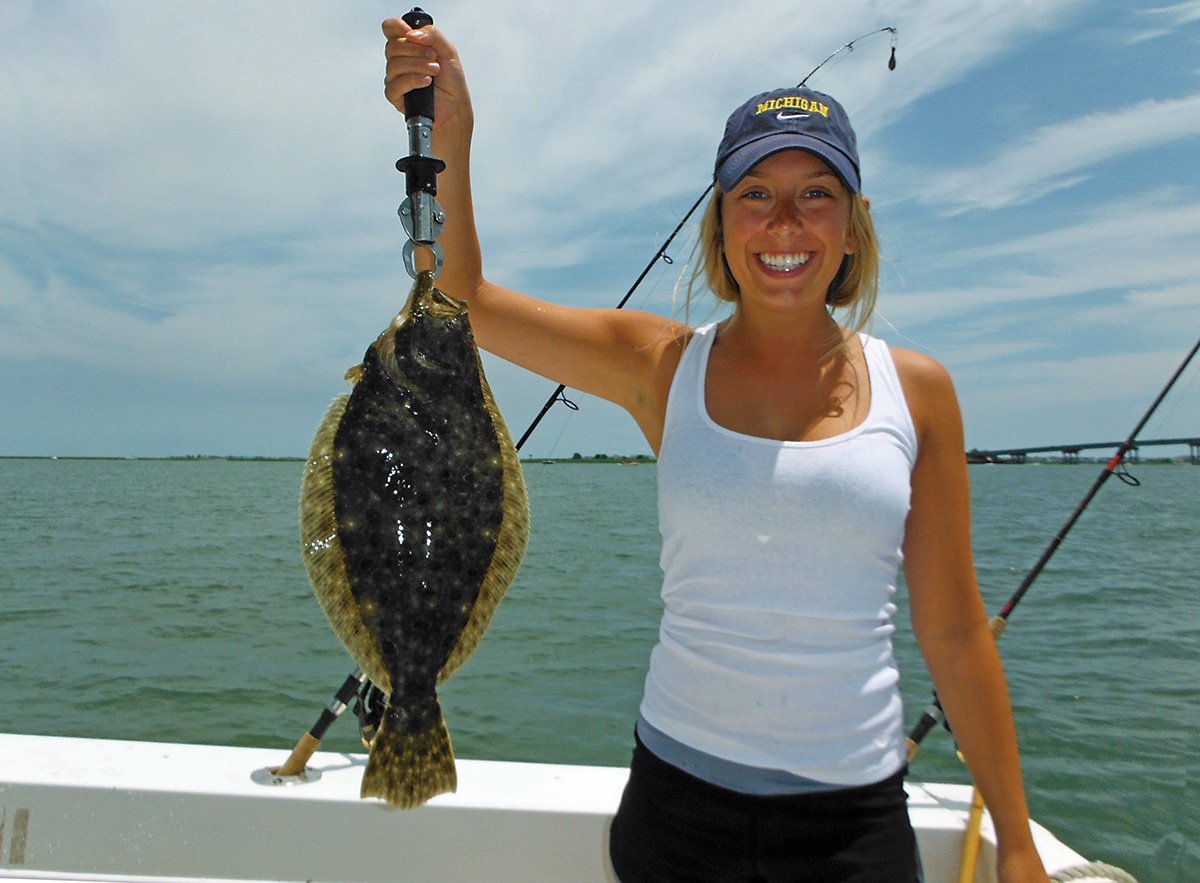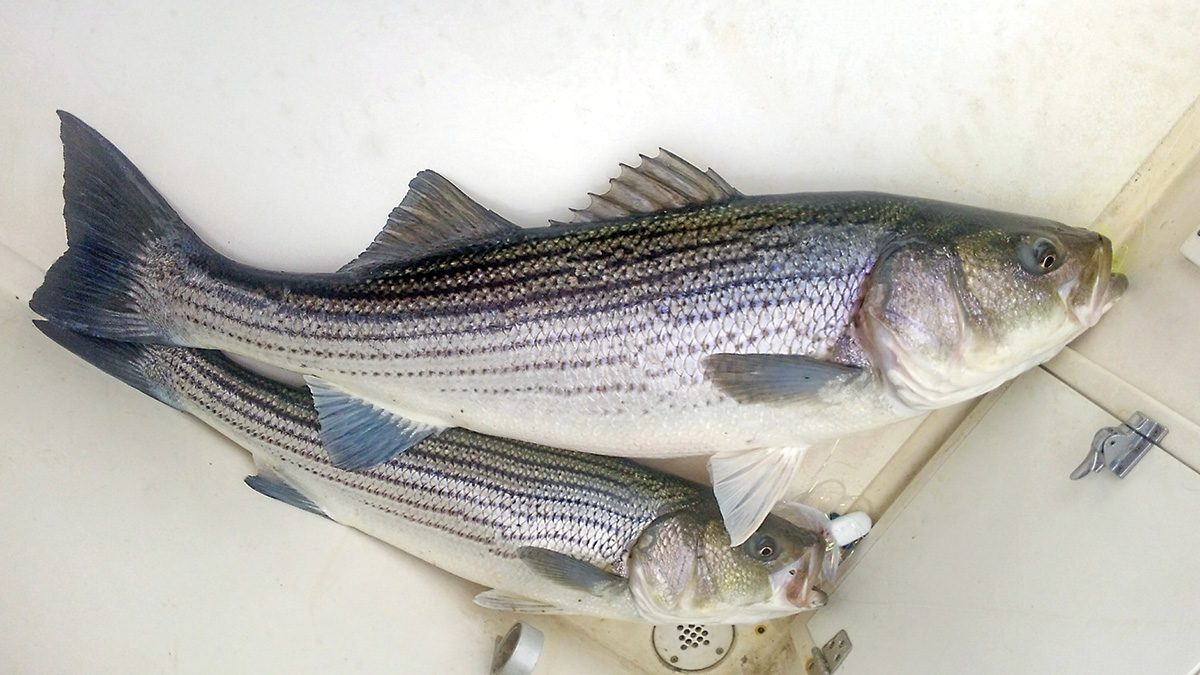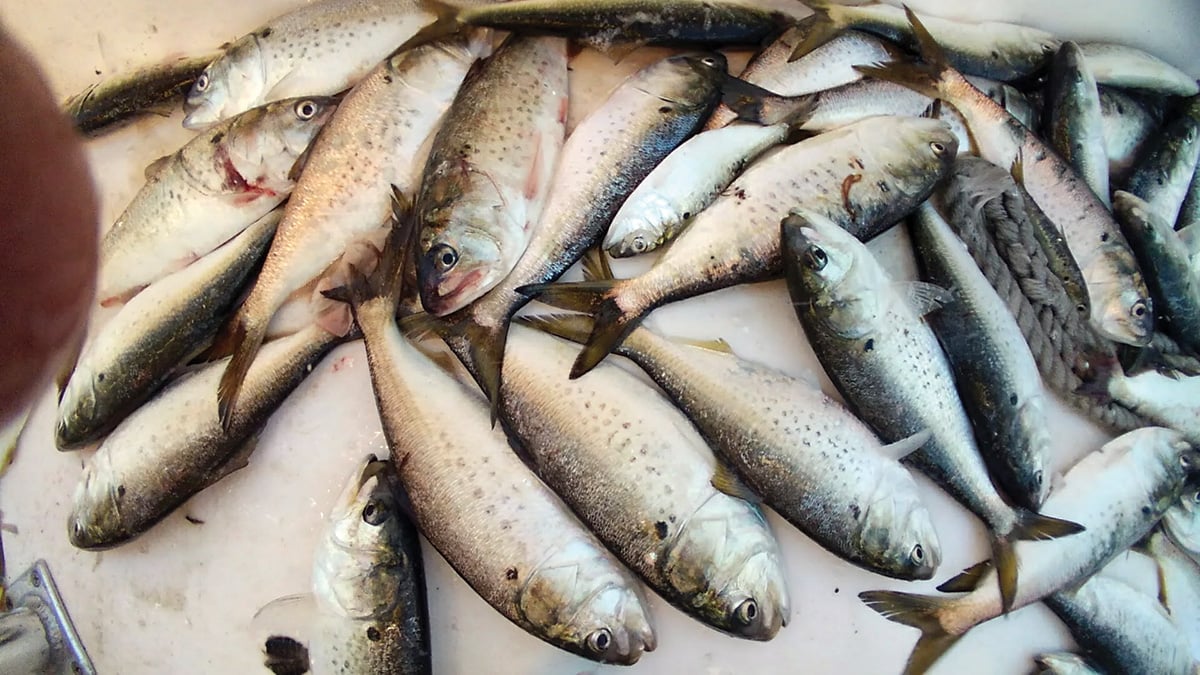
If there’s one thing that holds true in life and fishing, it’s that nothing remains static.
I don’t think I’ll get too much pushback by saying some of our inshore species have somewhat altered migration patterns in recent years. If you’ve gained better fishing by a shift of more fish to your area, perhaps you don’t think about it all that much. However, if you’ve been plying waters that have far less of your target quarry, you’ve probably seen more changes than you’d prefer. I caught up with a few South Jersey captains earlier this year who offered up their take on a grand slam of species.
Striped Bass
The most intense discussions of inshore fish happen when the subject turns to striped bass. Once decimated before stringent regulations and pollution controls helped them rebound, anglers’ thoughts are more visceral and emotional. For Capt. Franz Hueber of Libation Charters, the fishing out of his former home port of Cape May was once so strong that the term “world class” was often associated with the destination. But in recent seasons, things haven’t been quite the same.
“The first part of the run was a clam bite and then we’d get a few weeks of post-spawn bunker chunking,” Hueber told me, noting that action is now a fraction of what it was years ago when a sensational run of big stripers flowed into and ultimately down from the Delaware River before and after the spawn. “This part of the cycle has changed entirely. Now they seem to charge right up to the spawning grounds and wait for the right water temperature (to spawn).”
Hueber said a few unproven thoughts and possibilities for slower action could be that striped bass are feeding on ocean bunker on the way north and no longer need the energy they used to consume during the swim up the Delaware River. It’s also possible that the many Delaware Bay fish have moved to new spawning grounds or perhaps have been incrementally reduced by constant pressure on both sides of the Bay. Finally, he thought bass could have shifted to eating shad and herring, which are heading to the same spawning grounds.
Of course, looking through the entire season into the fall, which traditionally saw even greater angler participation, migratory changes could’ve easily been influenced by other factors. “The Cape May Rips started petering out around the same time that the beach replenishment started in full force in South Jersey,” Hueber noted, adding “Whether that is coincidental, I’m not sure.”
“The last three autumns have been unseasonably warm,” said Hueber. “As the water cools, it normally forces the forage food (menhaden) to the south and down the New Jersey coast. The stripers naturally follow the large, schooling biomass and the bass will stay with the bait, period.”

Such changes have also forced some of the captains to change their migration habits as well. “This bass season was the latest I recorded as the water temps stayed above 60 degrees into the first week of November and we had to run to Asbury Park in early November to find a bite,” Capt. Hueber said. “We moved to Barnegat Light to intercept the biomass based on weather patterns of the last two seasons.”
No doubt, the biggest of the striper schools are holding north longer. In fact, the largest, ocean-going schools are getting to South Jersey as much as three to four weeks later than five years ago, and four to five weeks later than a decade ago. Forage, weather and water temperature theories are well-chronicled and some even swear Superstorm Sandy had an impact on the way stripers travel.
“The Delaware Bay has been out of the fall migration pattern due to water temperatures,” Hueber added. “By the time the biomass of stripers reaches the mouth of the Delaware Bay, the water temp has been in the low 40s.” The skipper theorized that cold, freshwater of the Delaware River cools the bay long before the Atlantic Ocean starts to cool down, with bunker moving towards the warmer water and bass on their tails.
Capt. Dan Ponzio who runs War Dance Charters out of Atlantic City also noticed the composition of the bass schools changing from previous years along with the bait. “My number one observation is the lack of bunker boats, and therefore the monstrous bunker schools have caused the migration to pause for about six days at a time, and the schools are now mixed in size,” Ponzio stated. “Before, I can remember all fish of the same size fish traveled together and the largest came first.”
Thus the silver lining in that different age-class fish are often traveling together during their ocean trek. Also, encouraging is the fact that the rivers are experiencing an influx of juvenile fish, with 2017 and the first of the 2018 season each seeing an increased presence of back bay bass in the 24- to 32-inch class after some very disappointing years.
Blues & Weakies
Fishing out of Atlantic City puts Capt. Ponzio in a tremendous position to get on the back bay bluefish bite that has become the new norm. “It’s the same deal as the bass,” he said. “The incredible quantity of spawning bunker up the rivers and bays pulls the giant blues into the inlets and tributaries. Those monster blues would stay offshore and work on the bunker, mullet and herring schools, but now there are so many pogies (menhaden) in the bay putting off so much oil they can’t pass it by,” Capt. Ponzio proclaimed. “Seeing gigantic schools of 10- to 12-pound blues in the bay is absolutely amazing.”
While slow to materialize in 2018, the shift that took place about four years ago is still mostly consistent as late April rolls around, with action continuing through the entire month of May. Bluefish that once stayed well offshore seem to have taken more of a liking to estuary waters throughout New Jersey. They may sniff the menhaden when entering the skinny waters, but they have a full smorgasbord of juvenile fish when they arrive with small stripers, weakfish and fluke all on the menu if they aren’t careful.
Weakfish have been one of the most mysterious inshore fish to see migration changes in the last 10 years or more. Theories on their pattern changes range from the quantifiable overharvest situation to natural change in the cyclical movements. Capt. Ray Szulczewski of Tide Runner Charters in Cape May spent the better part of his life targeting weakfish in South Jersey waters and developed his own theories.
“In the 1980s netters from the Carolinas and New Jersey were catching tons and tons of weakfish before they could spawn,” Capt. Ray note. “The Cape May Party and Charterboat Association pleaded to officials to limit the take, but we were told not to worry and the stocks were strong.” Ironically, Szulczewski said those stocks were declared depleted two years later.
Like many local anglers, Szulczewski also believes Salem Nuclear Plant may have played a role in that it uses direct water from the Delaware Bay for cooling purposes. “The plant admitted that millions of small fish of all kinds were sucked into the filters and this happened right in the middle of prime breeding grounds,” he noted. “When you destroy a genetic pool of fish that migrate to the Delaware Bay, maybe there aren’t enough to continue to the process.”
This particular theory has been considered for other fish species such as red drum that used to proliferate South Jersey waters up to Great Bay a hundred years ago. Same too with certain chemicals making their way into the ecosystem. “The toxic run-off from lawns in addition to mosquito killer hurt too,” Szulczewski added. Like many striper hounds, Captain Ray feels the striped bass comeback coincided with the slide in weakfish numbers too. “We used to find stripers’ bellies full of 9- to 12-inch weakfish.”

No doubt, the loss of structure and fertile, surrounding bottom due to beach replenishment efforts has had an impact and has provided a legitimate beef for land-based anglers that fish for stripers or weakies. That doesn’t even account for the suspended sediment and loss of natural sloughs that take place when “man” shifts the balance at the beach. Perhaps these replenishments push the beach-traveling weakies further offshore? I know one buddy who was fishing for fluke 15 miles offshore that had three rods hook up 8-pound class weakfish simultaneously.
Then again, Raritan Bay anglers enjoyed a pretty good run of solid weakfishing throughout much of the summer of 2017, particularly when peanut bunker were in heavy supply.
Summer Flounder
It seems hard to refute that the largest masses of fluke as well as doormat-sized specimens are “creeping” northward. This migration shift is most likely due to gradual, yet quantifiable increases in the North Atlantic Ocean temperature. Multiple scientific studies have shown subtle, yet consistent over time, spikes in temperatures over the years. Those increases may only read in decimals to half a degree at a time; however, they seem to have a real impact on summer flounder along with numerous other fish and sea organisms.
If you are cynical of scientific data, as many of us are when using it in the same sentence as the word “fluke,” then consider that the commercial draggers from the Carolinas are relying more heavily than ever on offshore New Jersey trawls of fluke to fill their quotas before turning homebound. Simply stated, they wouldn’t travel so far north if it were not necessary, right? Between the science, the anecdotal angler reporting and commercial travels and landings, it appears likely that the fluke migration push north is very real.
It seems like just a few years ago South Jersey tackle shops were weighing in a nice handful of 10-pound plus fluke per year. Although not scientific by any means, it doesn’t seem like the same quantity of true doormats are being recorded in the South Jersey as once before. Yet, when anglers get north of Manasquan, and under the right conditions plenty of “doormats” of 10 pounds and over are caught with much more regularity.
“The clean bottom north of Barnegat Inlet definitely has become even cleaner, and the mud to the south has gotten muddier,” Ponzio noted. “There also has been a current change that started happening 15 years ago that seems to have had an impact on the krill.”
The season for these four species is upon us. No matter the reason for migratory changes, anglers ready and willing to meet the shift have grand slam possibilities this month if their tactical strategy is right!




